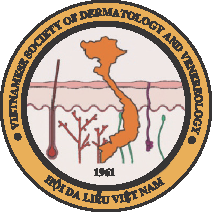NUTRITIONAL STATUS IN PATIENTS WITH ATOPIC DERMATITIS AT HO CHI MINH HOSPITAL OF DERMATO-VENEREOLOGY 2020
DOI:
https://doi.org/10.56320/tcdlhvn.v35i.6Keywords:
nutritional status, overweight - obesity, atopic dermatitis, dietAbstract
Background: Atopic dermatitis has become more prevalent in recent years and consistently account for high economic burden in Europe and Asia. As a chronic inflammatory skin disease, atopic dermatitis may affect nutritional metabolism. Researchs have found an association between being overweight or obese and atopic dermatitis, though with controversial conclustions.
Objective: To investigate nutritional status of patients with atopic dermatits vistting Ho Chi Minh Hospital of Dermato-Venereology, 2020.
Subjects and method: A cross-sectional study was carried out among 200 atopic dermatitis patients aged over 19 visiting Ho Chi Minh Hospital of Dermato-Venereology from 06/2020 – 9/2020.
Results: The mean age of participants was 43.3 ± 16.1. Nutritional status of participants were graded according to Body Mass Index showing that the overweight-obesity patients group were nearly half (48.5%) of participants and proportions of male and female within this group were approximately equivalent (54% male and 46% female); with obesity group accounts for 25% of the participants, 44.5% were in normal BMI range group, and only 7% were classified into underweight group. Central obesity (determined by Waist-hip ratio) had prevalence up to 52% of the participants with proportions of male and female were 48% and 52%, respectively. Abdominal obesity (determined by Waist circumference) had prevalence of 46% with proportions of male and female were 49% and 52%, respectively. 36% of participants practiced dietary eating habits, and more than a quarter of participants gave reasons for worries of the effects on their skin problems while only 9% stating the reasons of loosing weight.
Conclusions: The proportion of overweight-obesity in adults with atopic dermatitis was found higher than the aforementioned proportion in the general population, along with the finding that patients practicing their own dietary habits were moderately high, hence guidance and proper consults about nutrition should be of concerned, in addition to conventional atopic dermatitis therapies.





